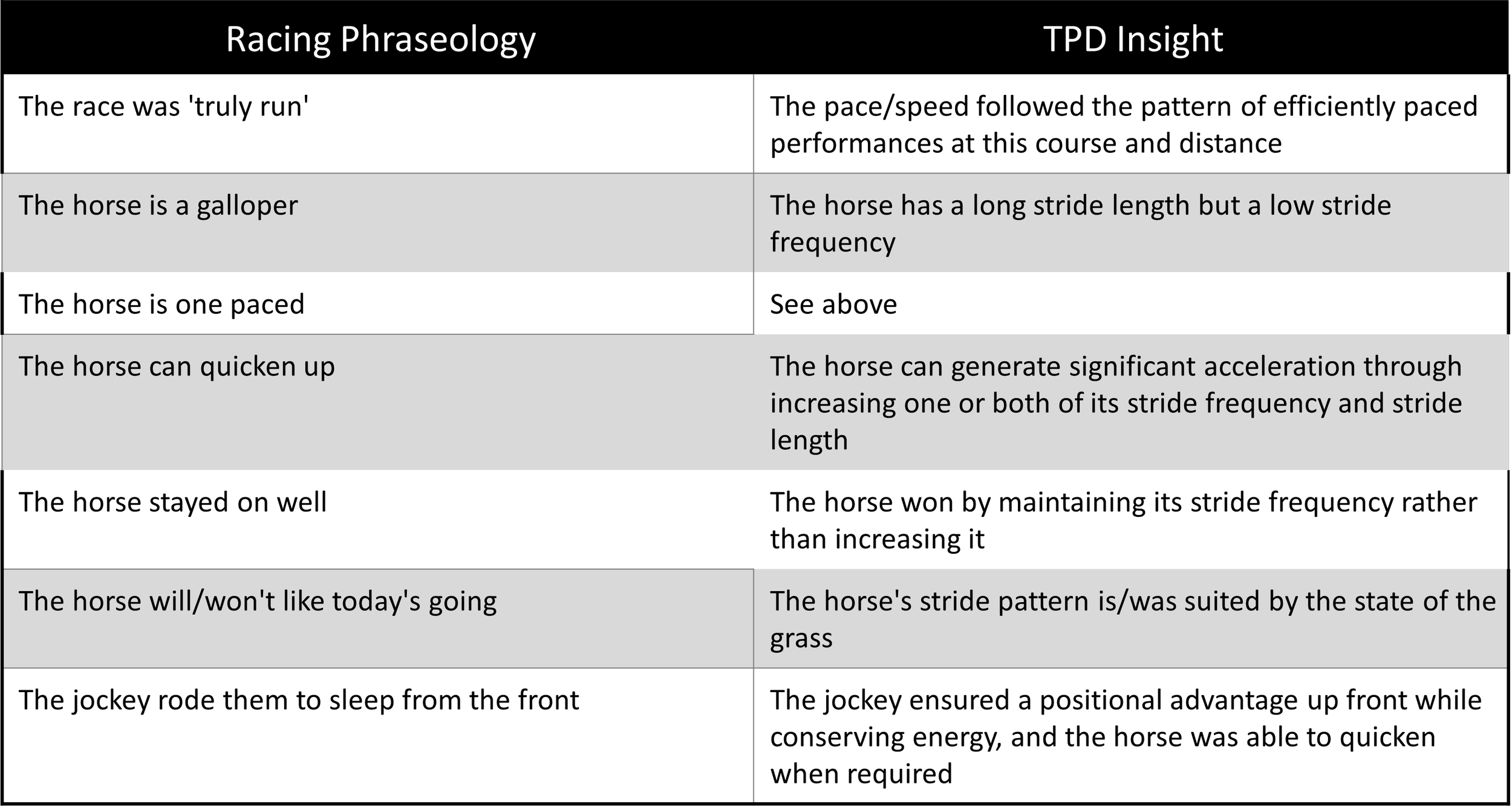By Vincent Souillat, TPD Commercial Executive
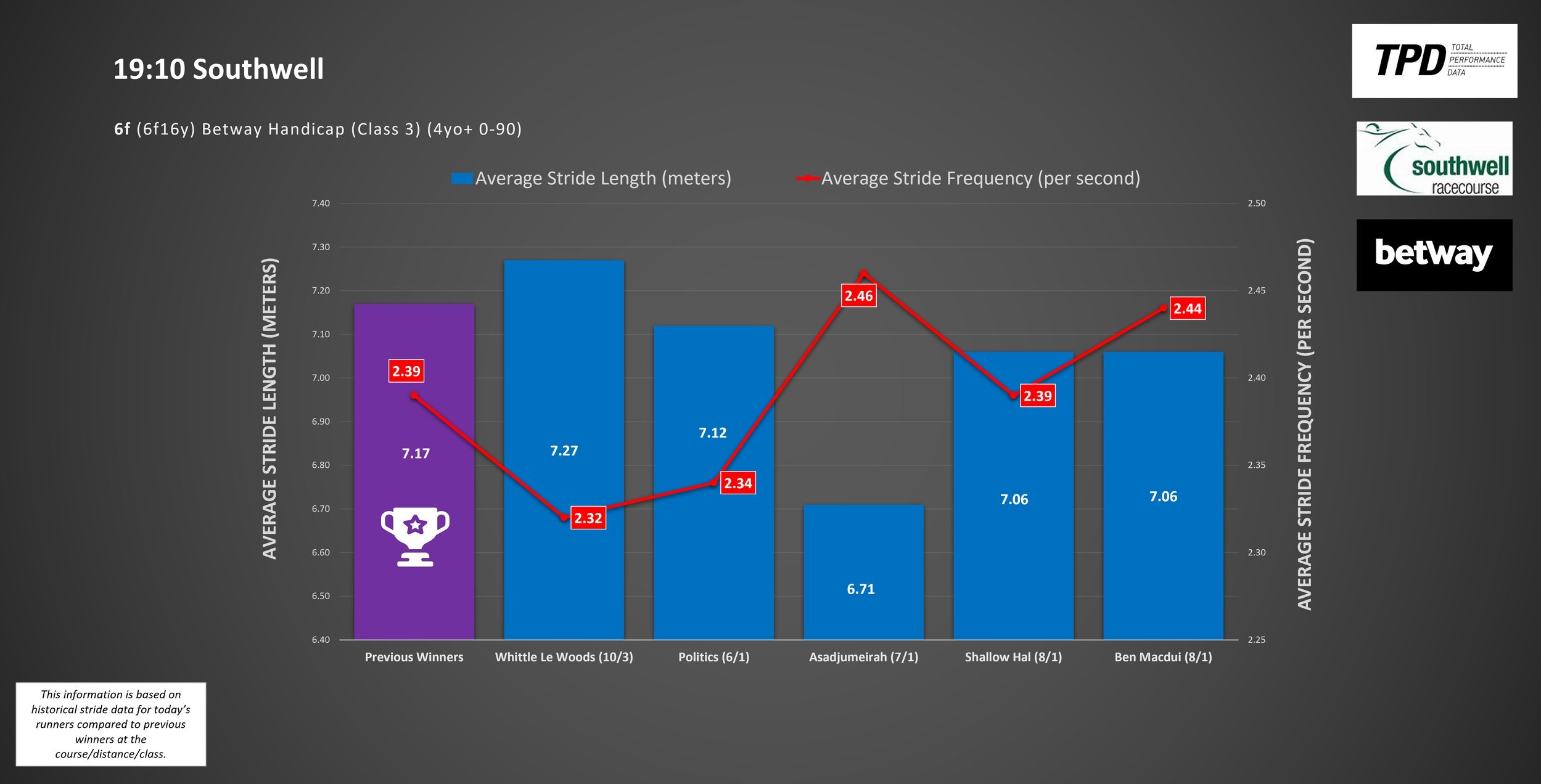



STRIDE DATA
Why is Stride Data useful?
-
A horse’s speed in getting from A to B is a product of its stride, which consists of stride length and stride frequency
-
During each stride, the horse takes one breath.
-
For each stride taken, metabolic energy is expended for both breathing and moving the limbs
-
Horses, like humans, have a certain amount of energy to deploy, thus stride characteristics are a good indicator of the optimum racing distance for each horse.
-
The best striding horses cover more ground than average striding horses per unit of effort.
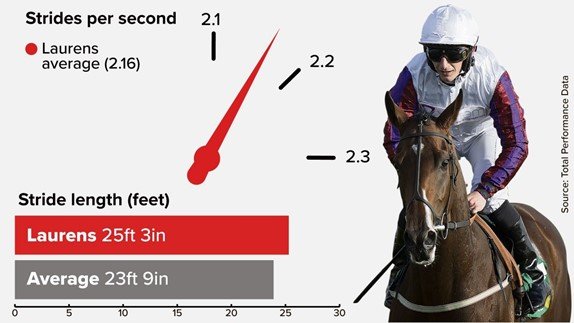



STRIDE LENGTH
What is stride length?
-
The distance travelled per stride
-
A horses limb length broadly correlates to stride length. The taller the horse, the longer the stride length (with exceptions such as Stradivarius)
-
Long but infrequent strides defines the characteristics of long-distance flat horses or jumpers.
-
Stride length is heavily affected by both surface speed and course topography
-
Slower going and uphill sections will shorten a horse’s stride, faster ground and downhill section will do the opposite.
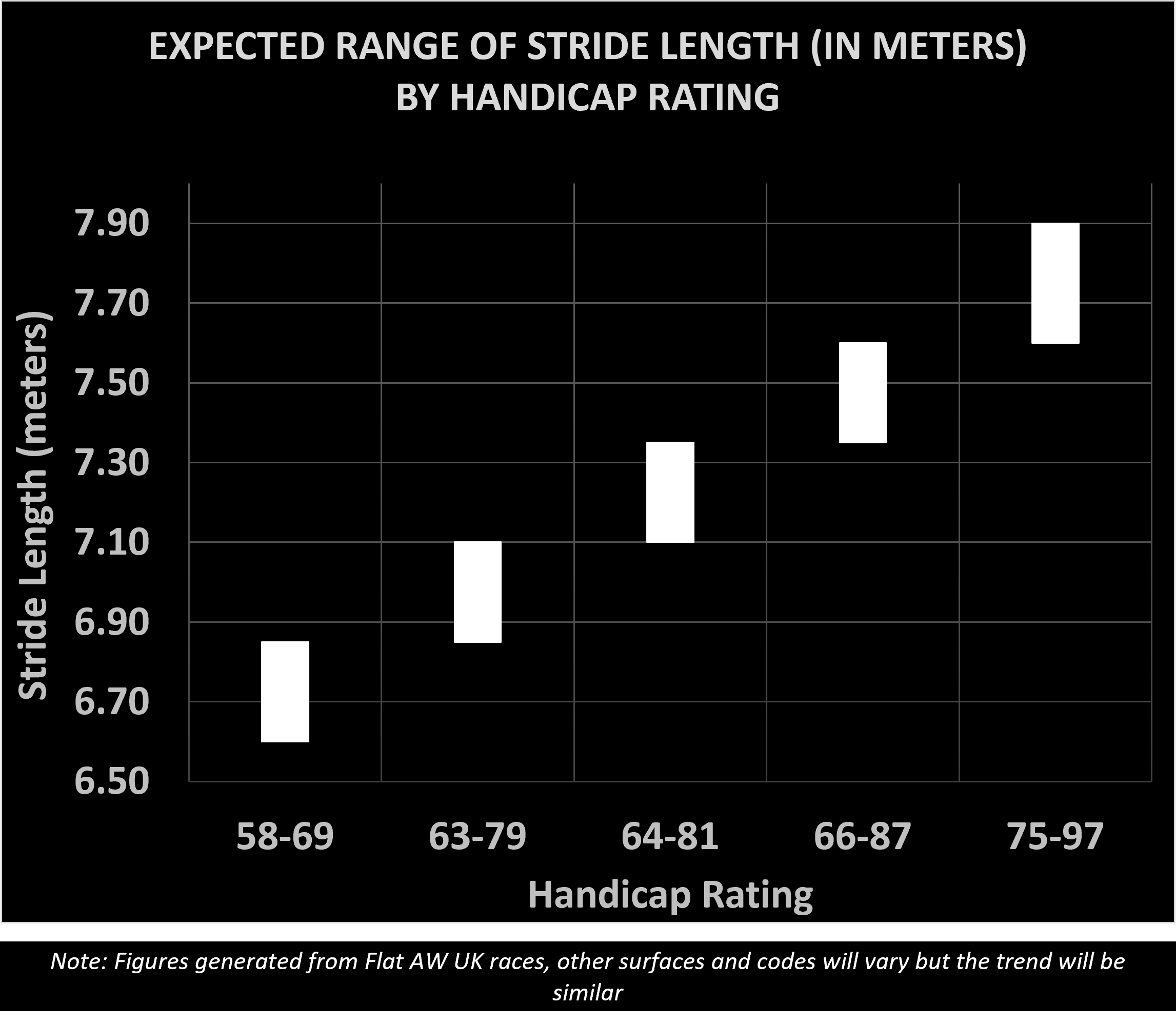



STRIDE FREQUENCY
What is stride frequency?
-
Stride frequency, otherwise known as cadence, represents the number of strides (and therefore breaths) per second.
-
Sprinters over 5f generally have a higher stride frequency than horses who run over 1 mile or further (with exceptions such as Kachy).
-
To accelerate in races, elite horses tend to use both stride length and frequency in a linear fashion. Less talented horses use stride frequency over length to quicken but that comes at a higher metabolic cost, so they tire more quickly.
-
As observable in the graph, the expected stride frequency decreases as the race distance increases.
-
Note that some like to consider the average SF over a whole race while others prefer to assess the peak average.
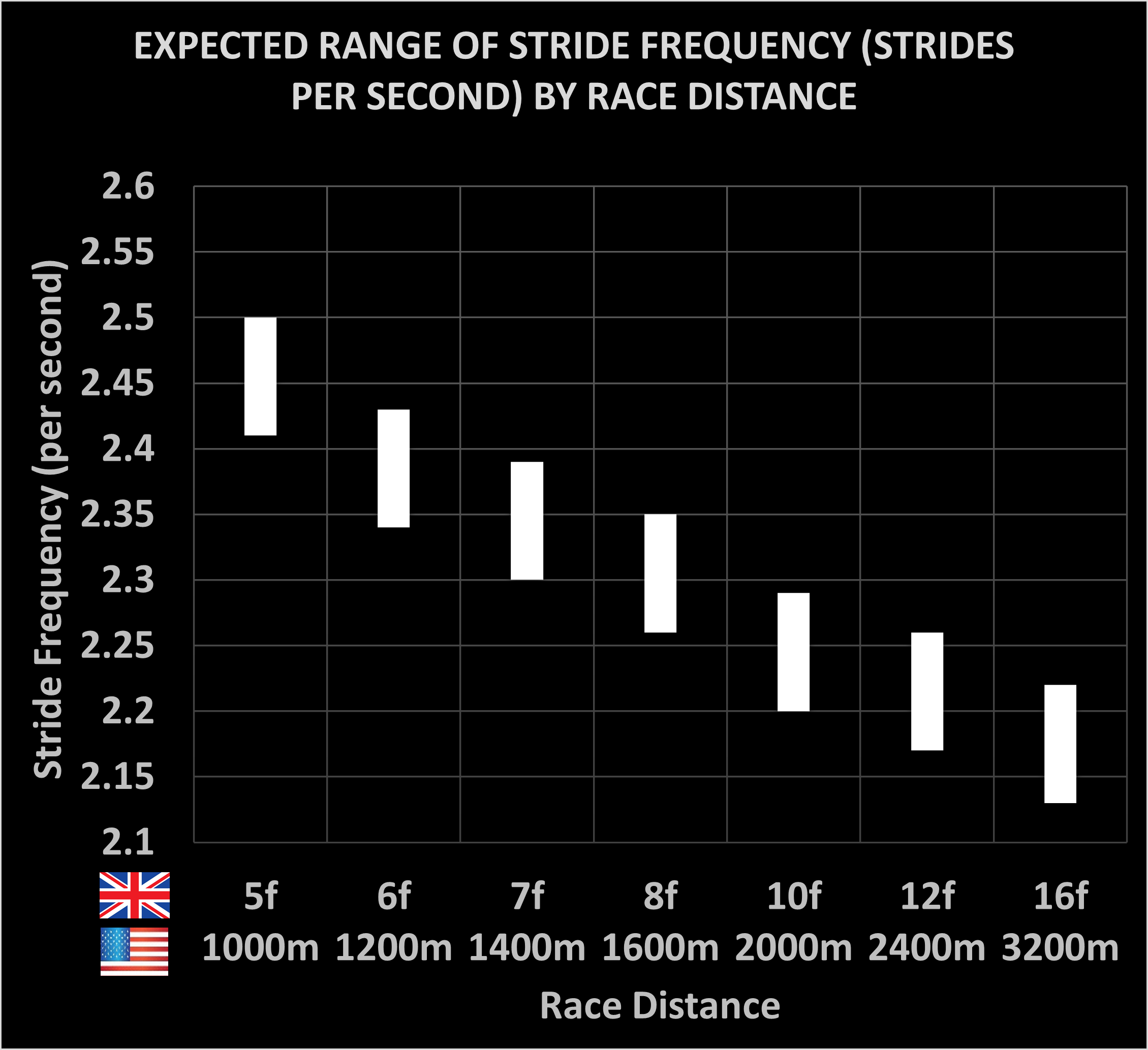



PAR TIMES
What are par times?
-
Thousands of races enable TPD to calculate the expected speed second by second.
-
Winners can win by running efficiently or by running less inefficiently than their competitors
-
Some horses will only win if pace suits their style of running as only exceptional horses can win when the pace doesn’t suit their profile
-
Jockeys will try to set or follow the pace that best suits their horse on that day
-
These charts run live and after the race to tell the pace story
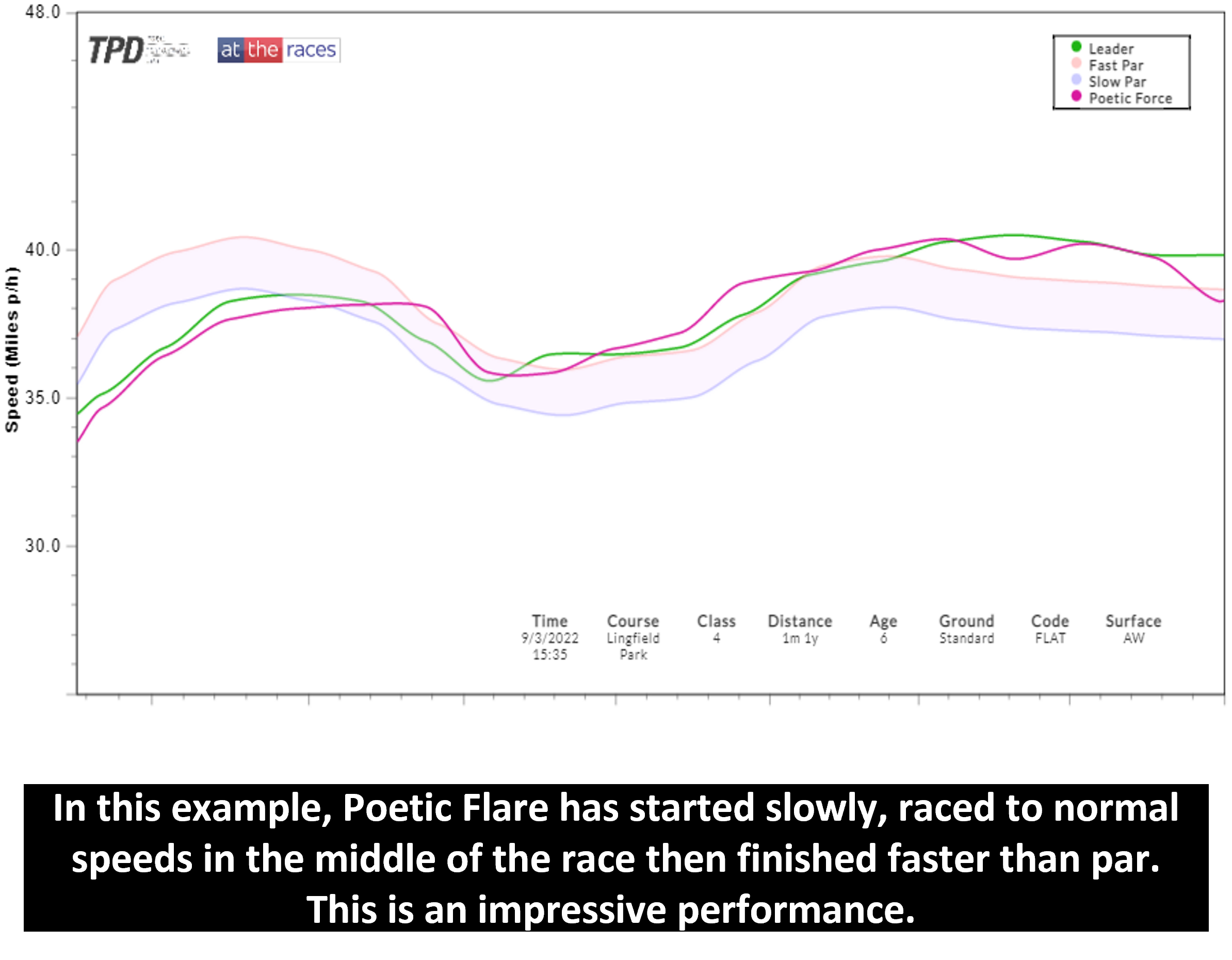



EXAMPLE HORSE – ENABLE
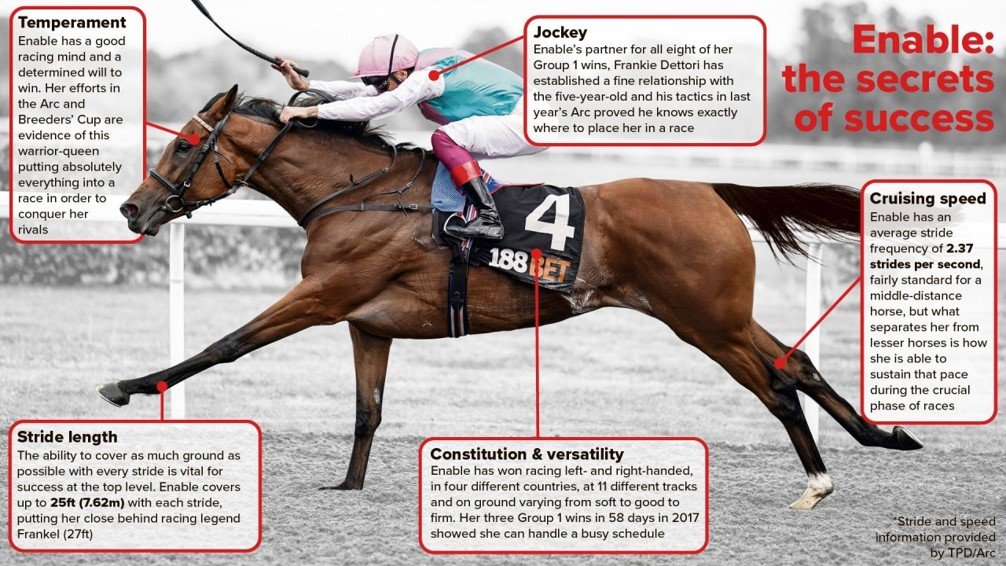



GLOSSARY OF TERMS
